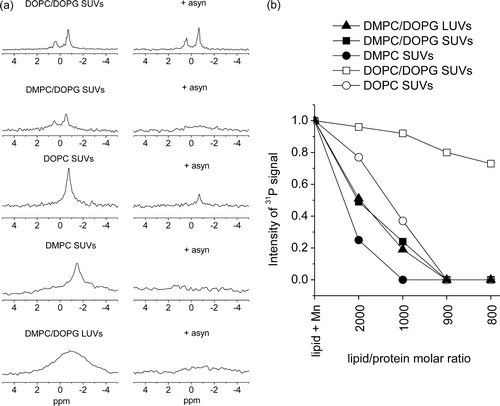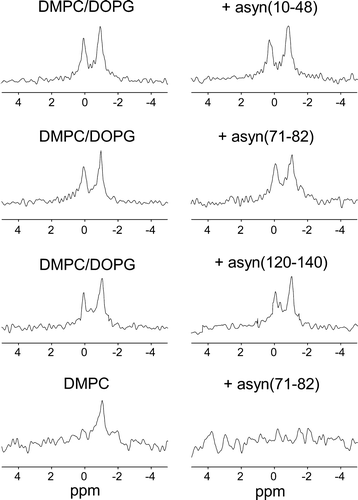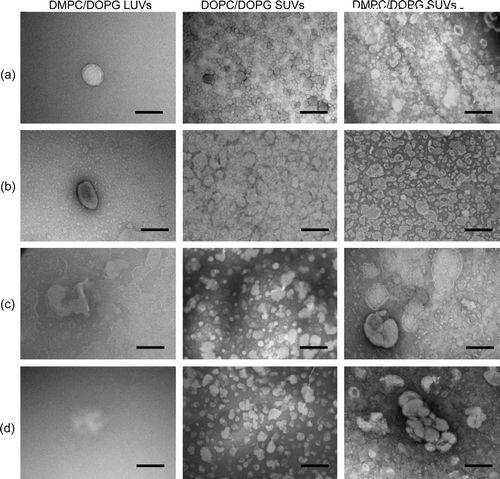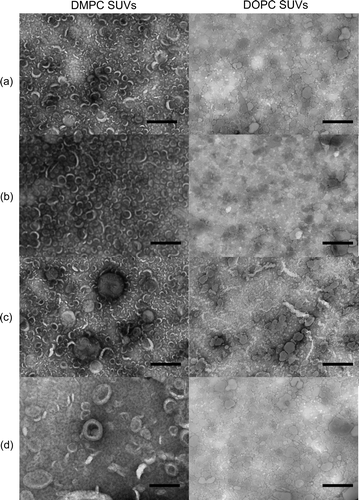Figures & data
Figure 1. An assay using 31P MAS NMR to investigate the effects of asyn on the permeability of phospholipid vesicles. The spectrum of SUVs of DMPC/DOPG at a 2:1 molar ratio shows peaks from the two lipid components on the inside (PCi, PGi) and outside (PCo, PGo) of the vesicles (top). Addition of Mn2 + to the vesicles selectively broadens the peaks from the exposed lipids on the vesicle exterior leaving visible only the peaks from the interior lipids (middle). Subsequent addition of Triton-X100 breaks open the vesicles, which exposes both leaflets of the bilayer to Mn2 + and no signal is observed (bottom).

Figure 2. Results of 31P MAS NMR experiments to investigate the effects of asyn on the permeability of phospholipid vesicles. Spectra of initially intact SUVs composed of DOPC/DOPG, DMPC/DOPG, DOPC, DMPC and LUVs of DMPC/DOPG, after addition of Mn2 + are shown before (left) and after (right) the addition of asyn to a lipid/protein molar ratio of 1 000:1 (a). The signal observed after the addition of protein is a measure of the amount of intact vesicles remaining. Figure b, summarizes the 31P signal intensity remaining after the addition of Mn2 + and asyn to lipid/protein molar ratios 2 000:1, 1 000:1, 900:1 and 800:1 of various phospholipid compositions as shown. Intensity values are scaled with lipid alone equal to 1. All experiments were performed at 30°C.

Figure 3. Investigation of the association of asyn peptide fragments with phospholipid vesicles. Spectra of initially intact vesicles after addition of Mn2 + are shown before (left) and after (right) the addition of asyn(10–48), asyn(71–82) or asyn(120–140) at a lipid/peptide molar ratio of 25:1. As above, the signal observed after the addition of peptide is a measure of the amount of intact vesicles remaining.


